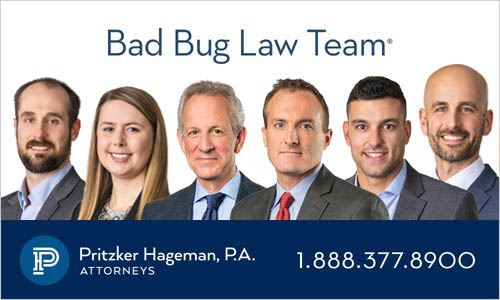The FDA and CDC have started using Whole Genome Sequencing (WGS) to identify and investigate outbreaks of listeriosis, the illness caused by food contaminated with Listeria monocytogenes.
Our Listeria lawyers use WGS findings as evidence in lawsuits seeking compensation for people diagnosed with listeriosis.

What is Whole Genome Sequencing and How is it Used as Evidence?
Whole genome sequencing, referred to as WGS, provides a complete DNA make-up of a specific Listeria monocytogenes isolates from human blood, urine or stool, and from food and environmental samples gathered at food processing plants, restaurants and other locations thought connected to an outbreak. With this DNA data, illnesses can be connected to food products and places.
If the pathogens found in the food or food production environment match the pathogens from the sick patients, a reliable link between the two can be made, which helps define the scope of a foodborne illness outbreak (FDA).
This is evidence that is used in lawsuits by outbreak victims against growers, food processors, distributors, retailers, restaurants and others.
Because WGS can differentiate between even closely related organisms, the FDA, CDC and state health officials are now able to detect outbreaks involving only a few people. This will both help prevent outbreaks from growing and help people sickened to get compensation from the companies responsible for selling food poisoned with this extremely dangerous pathogen.
Where Are You from, Listeria?
With Whole Genome Sequencing, the DNA of Listeria bacteria is distinguishable by geographic location, meaning a DNA analysis can reveal where the bug came from initially.
For example, a recent outbreak sickened at least 35 people in 12 states: Arizona (5), California (3), Colorado (1), Minnesota (4), Missouri (5), Nevada (1), New Mexico (6), North Carolina (1), Texas (4), Utah (1), Washington (1), and Wisconsin (3). People were sickened from October of 2014 to January of 2015. WGS determined that the outbreak involved 2 clusters of illness caused 2 highly related strains. One person was sickened by both strains.
In January of 2015, WGS of environmental L. monocytogenes isolates from a California apple processing plant owned by Bidart Bros. and from whole apples produced by the company were “highly related” to the outbreak strains. This meant that apples processed in California had sickened people throughout the United States.
In the case above, the source of the outbreak was apples, but people had been sickened by eating caramel apples. WGS, with its information about geographic location, helped pinpoint one ingredient in the caramel apples, the California fruit, as the source of the outbreak.
Knowing the geographic areas that pathogens are typically associated with can be a powerful tool in tracking down the root source of contamination for a food product, especially multi-ingredient food products whose ingredients come from different states or countries. The faster public health officials can identify the source of contamination, the faster the harmful ingredient can be removed from the food supply and the more illnesses and deaths that can be averted (FDA).
Genome Trakr
The FDA is coordinating efforts to sequence pathogens, including L. monocytogenes, collected from people sickened in foodborne outbreaks, contaminated food products and environmental sources. The genome sequences are archived in a database called GenomeTrakr.
- To date, there are 29 Genome Trakr labs: 13 federal, 13 state and university, 3 outside of the U.S.
- These labs have sequenced more than 2,600 L. monocytogenes isolates.
- The data coming out of these labs is housed in public databases at the National Center for Biotechnology Information (NCBI).
- WGS can clearly define foodborne illness outbreaks, even those involving a small number of people sickened.
- WGS can provide location specificity for outbreak investigations.
- This data can be used to help you get compensation from a corporate wrongdoer for personal injury and wrongful death from listeriosis. Read about 5 reasons to file a Listeria lawsuit.
